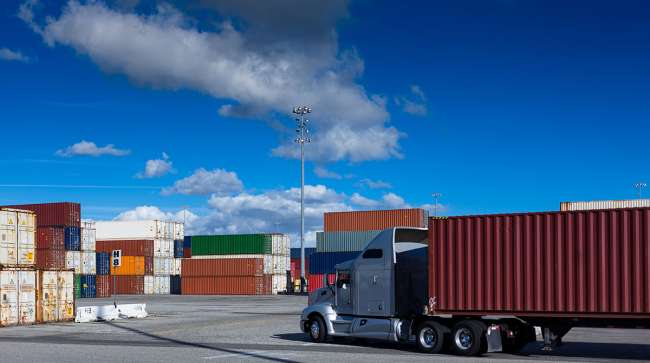Yleiskatsaus tariffimuutoksista ja niiden toteuttamisesta
Uusista tulleista äskettäin annettu ilmoitus vaikuttaa merkittävästi logistiikka- ja kuljetusalan dynamiikkaan. Koska tullien on määrä astua voimaan 7. elokuuta, useat kuljetusalan sidosryhmät ovat innokkaita ymmärtämään, miten nämä tullit vaikuttavat heidän toimintaansa.
Lisääntynyt selkeyden kysyntä tullien epävarmuuden keskellä
Lähestyvien tullitariffien myötä logistiikkayritykset kuhisevat tiedusteluista. C.H. Robinsonilla on meneillään vilkas jakso, kun tiimit työskentelevät ahkerasti arvioidakseen näiden uusien tariffien vaikutuksia. Mike Short, avainhenkilö globaalissa huolinnassa, kommentoi muutosten pyörremyrskyä korostaen: "Vain 48 tunnissa todistimme Yhdysvaltain kaupan ja tariffien laaja-alaista aaltoa." Tämä lausunto alleviivaa, kuinka nopeasti tilanteet voivat muuttua logistiikan alalla, jossa ajoitus voi merkitä kaikkea.
Tariffien toteuttamisen rasitus
Uusien tullien käyttöönotto voi tuntua kaksiteräiseltä miekaltä rahti- ja kuljetusyrityksille. Vaikka niiden tarkoituksena on tasoittaa kilpailukenttää kotimaiselle tuotannolle, niiden tuoma monimutkaisuus johtaa usein sekaannukseen. Yritysten etsiessä selkeyttä C.H. Robinson on sitoutunut auttamaan asiakkaitaan vähentämään tullialttiuttaan ja navigoimaan näillä kartoittamattomilla vesillä.
Laajemmat vaikutukset maailmankaupalle
Tullimaksut voivat vaihdella dramaattisesti niiden vaikutuksessa eri kauppakumppaneihin. Vaikka joidenkin yritysten on ponnisteltava pysyäkseen kilpailukykyisinä, toiset selviävät vahingoittumattomina. Esimerkiksi Kanadasta tulevien tavaroiden hintoihin on vaikuttanut, mikä vaikuttaa suoraan logistiikkastrategioihin Yhdysvaltojen ja Kanadan välisillä reiteillä. Uber Freightin kaltaiset logistiikkapalveluntarjoajat kannustavat lähettäjiä lukitsemaan tuotantoaikataulut nopeasti kustannusten hillitsemiseksi ennen kuin uusia hinnankorotuksia tulee voimaan.
Strategiat tariffivaikutusten lieventämiseksi
Kuten sanonta kuuluu: "Kun elämä antaa sinulle sitruunoita, tee niistä limonadia." Haastavina aikoina kuljetusyrityksillä on mahdollisuus mukautua arvioimalla uudelleen hankintastrategiansa. On noussut esiin suosituksia, kuten hankinta alhaisemman tullin maista tai yhteistyön edistäminen toimittajien kanssa lisäkustannusten kompensoimiseksi. Logistiikkayritysten on edelleen ratkaisevan tärkeää tunnistaa alueet, joilla ne voivat leikata kustannuksia laadusta tinkimättä.
Kuluttajavaikutukset ja markkinoiden mukautukset
Nämä tariffimuutokset eivät jää huomaamatta yhdysvaltalaisilta kuluttajilta. Jenna Slagle, arvostettu data-analyytikko, totesi, että yritysten on siirryttävä strategioihin, jotka on suunniteltu lieventämään tariffien vaikutusta. Kustannusten noustessa ja mahdollisten hinnankorotusten muuttuessa väistämättömiksi, aaltoileva vaikutus voi johtaa kysynnän luonnolliseen laskuun hyödykesektoreilla, mikä vaikuttaa suoraan rahtimääriin.
Monitahoiset oikeudelliset ja toiminnalliset haasteet
Tariffeja koskevat oikeudelliset keskustelut, jotka koskevat niiden pätevyyttä ja täytäntöönpanoa, lisäävät logistiikkaan uuden monimutkaisuuden tason. Sidosryhmät seuraavat tarkasti tulevia muutoksia, mukaan lukien yhdenmukaistettujen järjestelmäkoodien odotettu 1. syyskuuta voimaan tuleva määräys. Uusi tariffimaisema vaatii väistämättä tarkempaa tarkastusta ja dokumentointiprosesseja, mikä edelleen monimutkaistaa rajat ylittävän laivaamisen dynamiikkaa.
Oppitunteja tulevaisuuden logistiikkasuunnitteluun
Aiemmat kokemukset viittaavat siihen, että logistiikkayritysten on pysyttävä joustavina ja valmiina jatkuvaan kauppapolitiikan epävakauteen. Tariffien käyttöönotto korostaa vankan logistiikkastrategian luomisen tärkeyttä, jotta voidaan minimoida kansainvälisiin toimitusketjuihin liittyvät riskit. Kuten Michelle Comerford totesi, tuontiin luottavat tahot kohtaavat nousevia kustannuksia ja häiriöitä, mikä saa ne arvioimaan uudelleen hankintastrategioitaan ja valmistuksen jalanjälkiään.
Valmistautuminen logistiikan uuteen aikakauteen
Aivan kuten myrskyyn valmistautuessa, yritysten on luotava varautumissuunnitelma, jossa otetaan huomioon mahdollisuus tiukentuneeseen valvontaan ja uusien tariffien mukaisiin vaatimustenmukaisuuteen. Perusteellinen valmistautuminen voi auttaa logistiikkapalveluiden tarjoajia menestymään epävarmuuden aikoina. Näin tekemällä he voivat vahvistaa toimintaansa mahdollisten tariffien aiheuttamien häiriöiden varalta.
Päätössanat uudesta tariffimaisemasta
Vaikka uusien tariffien vaikutukset saattavat vaikuttaa pelottavilta, perusteellinen valmistautuminen ja strategiset muutokset toiminnassa voivat johtaa positiivisiin mukautuksiin pitkällä aikavälillä. Logistiikka yritysten on pysyttävä paitsi ajan tasalla myös aktiivisesti mukana tulevaisuuteen suuntautuvissa ratkaisuissa, jotka asettavat tehokkuuden ja kustannustehokkuuden etusijalle.
GetTransport.com on ainutlaatuisessa asemassa helpottamaan tehokkaita logistiikkaratkaisuja näinä myrskyisinä aikoina. Tarjoten laajan valikoiman vaihtoehtoja, alkaen rahti toimitukset kohteeseen uudelleensijoittaminen palveluita, se tarjoaa kattavan ja edullisen alustan logistiikka-alan navigointiin. Olipa kyseessä toimistolaitteiden, suurikokoisten huonekalujen tai arkaluonteisten rahtien siirto, GetTransport.com varmistaa saumattoman kuljetuskokemuksen.
Viime kädessä on olennaista muistaa, että henkilökohtaiset kokemukset ja suorat vuorovaikutukset tuottavat usein tarkimmat arviot siitä, miten nämä muutokset toteutuvat tosielämän tilanteissa. GetTransport.com-sivuston ominaisuuksien ja vaihtoehtojen tutkiminen antaa kuluttajille mahdollisuuden tehdä tietoon perustuvia päätöksiä logistiikkatarpeistaan kohtuulliseen hintaan, mikä vähentää tarpeettomia kuluja tai pettymyksiä. Varaa kyyti jo tänään osoitteessa GetTransport.com.

 Uusien tariffien vaikutusten purkaminen kuljetus- ja logistiikka-alalle">
Uusien tariffien vaikutusten purkaminen kuljetus- ja logistiikka-alalle">